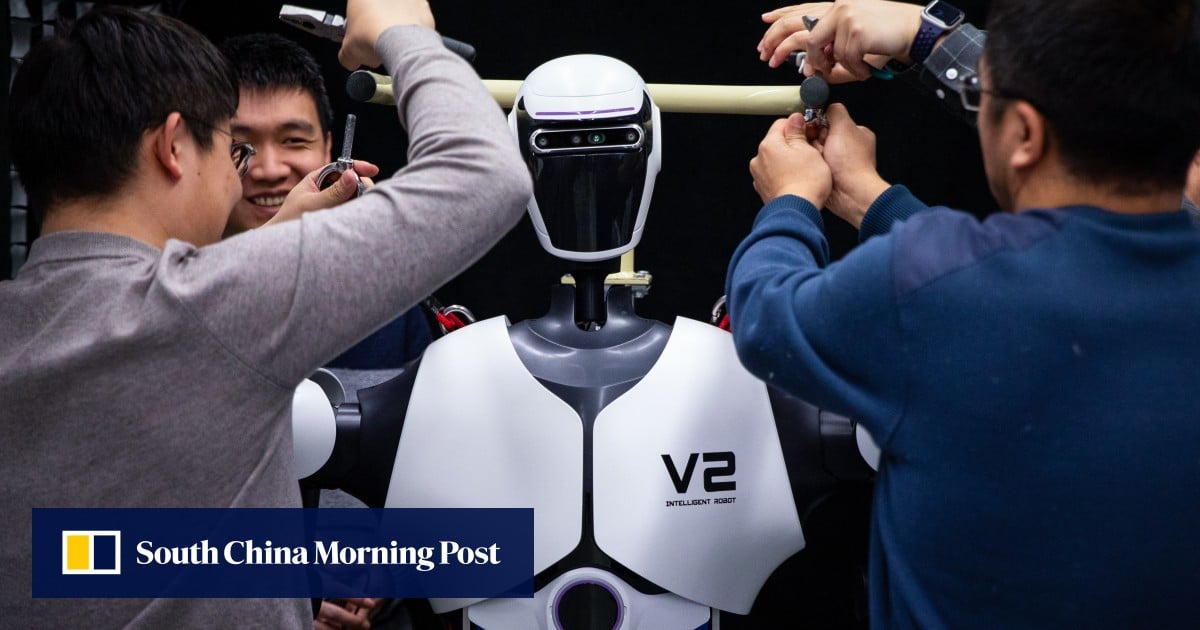Zheng Shanjie, chairman of the National Development and Reform Commission, “encouraged everyone to proactively adapt to the trends of technological revolution and industrial transformation, strengthen technology research and development, expand industry-enabling applications, and accelerate the high-quality development of our country’s artificial intelligence industry”, the commission said on Sunday.
The NDRC said Zheng visited research institutions and enterprises in Beijing including Zhiyuan Research Institute, Baidu, 4Paradigm, Baichuan Intelligence and Beijing Zhipu Huazhang Technology, without providing further details.
Tech innovation, which the authorities are counting on to boost the country’s long-term economic prospects, is widely expected to be among the key topics in his report.
China’s bureaucrats turn to AI, handwriting robots to cope with paperwork
China’s bureaucrats turn to AI, handwriting robots to cope with paperwork
China has made remarkable advances in AI over the past decade or so, matching or even surpassing that of the US in some fields like facial recognition.
However, the landscape has shifted in recent years, with leading American firms launching revolutionary products – such as OpenAI’s ChatGPT and the recently released text-to-video model Sora – while their Chinese competitors lag behind due to factors such high development costs, stringent state regulations and censorship.
“By erecting barriers, the United States attempts to monopolise its leading position in the development of AI, especially in the core computing power part of artificial intelligence development,” former finance vice-minister Zhu Guangyao told a forum in Beijing on Wednesday, according to the Shanghai news portal The Paper.
“In fact, it is cutting off the connection between the US and China in the field of AI.”
He said that although “China has also laid a strong foundation in AI application, especially in industrial systems and informatisation”, Beijing should recognise there was a computing power gap with the US.
The field is one of the main targets of Beijing’s latest infrastructure drive.
Last month Zhang Yuzhuo, head of the State-owned Assets Supervision and Administration Commission, ordered state-owned enterprises to play a greater role in the AI field, prompting work on a number of AI computing centres to accelerate.
The report also said that one of the country’s biggest projects, China Mobile’s intelligent computing centre in Hohhot in Inner Mongolia, would be completed by April next year, with parts of the facility opening in stages before then.
Huawei’s AI chip prowess under scrutiny after Nvidia taps it as likely rival
Huawei’s AI chip prowess under scrutiny after Nvidia taps it as likely rival
When finished, it will be the biggest single intelligent computer centre in Asia, and more than 80 per cent of its components will be made in China.
It follows the launch last year of another massive intelligent computing centre in Qingdao, operated by China Unicom, which cost around 3 billion yuan (US$417 million) to build.

Eugen Boglaru is an AI aficionado covering the fascinating and rapidly advancing field of Artificial Intelligence. From machine learning breakthroughs to ethical considerations, Eugen provides readers with a deep dive into the world of AI, demystifying complex concepts and exploring the transformative impact of intelligent technologies.


